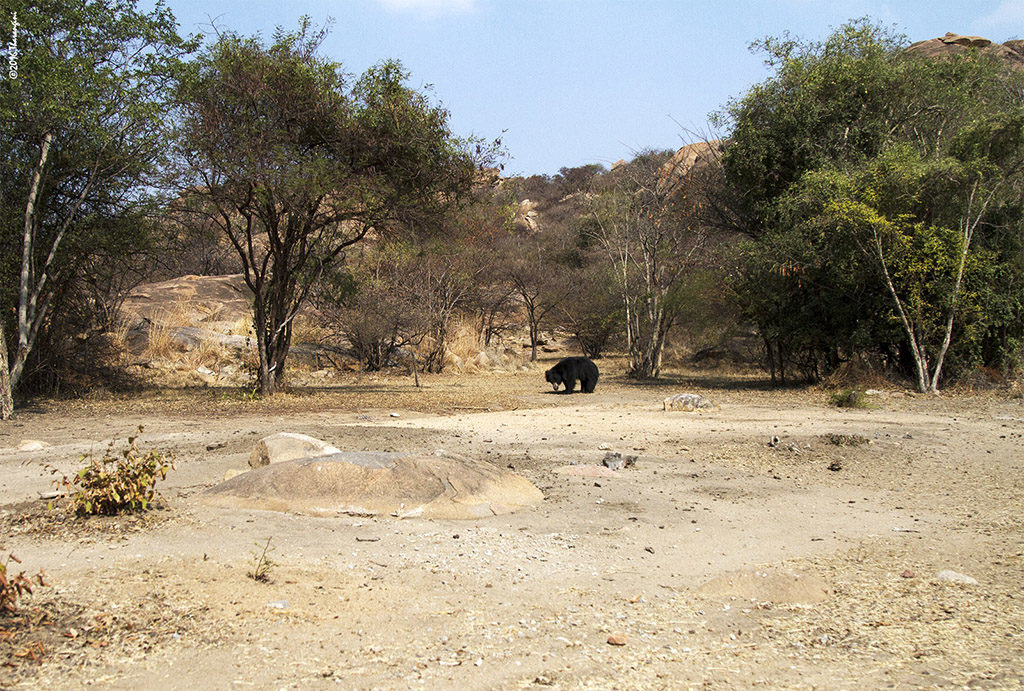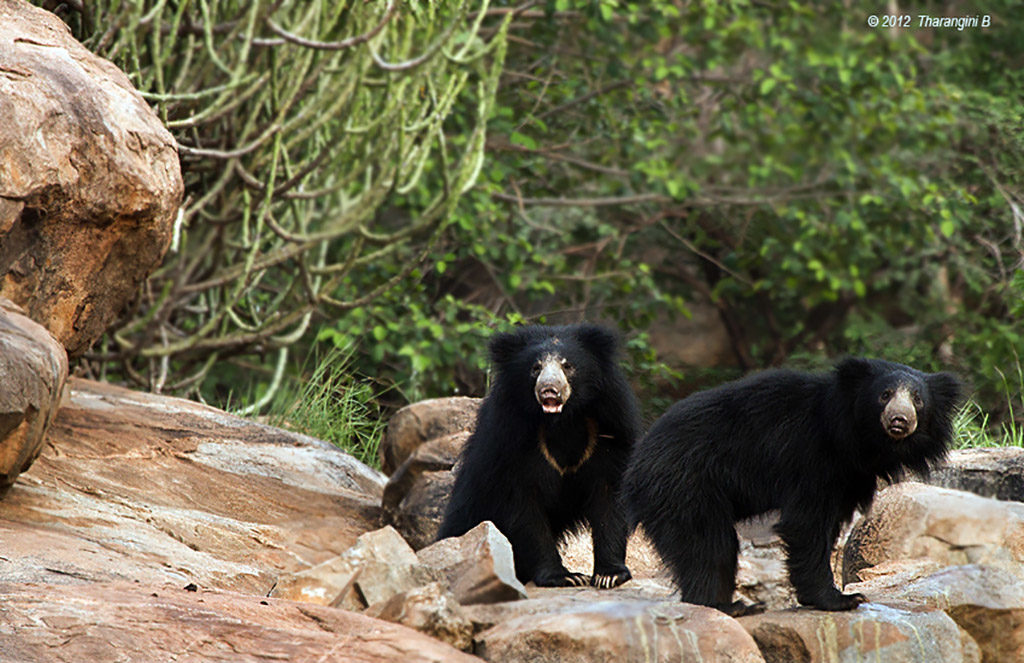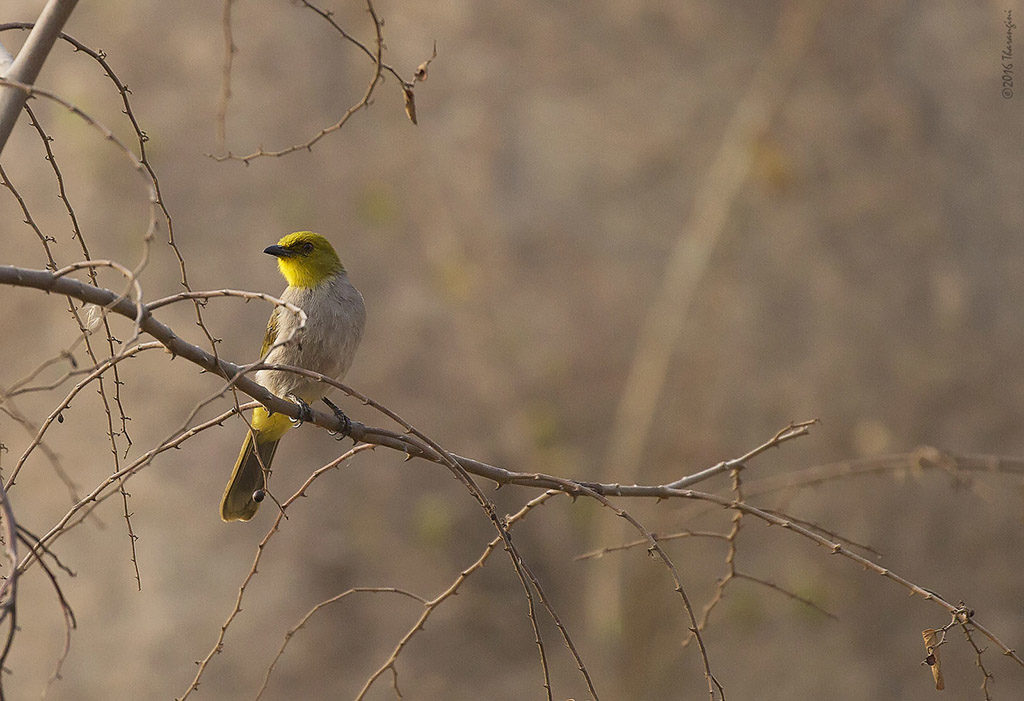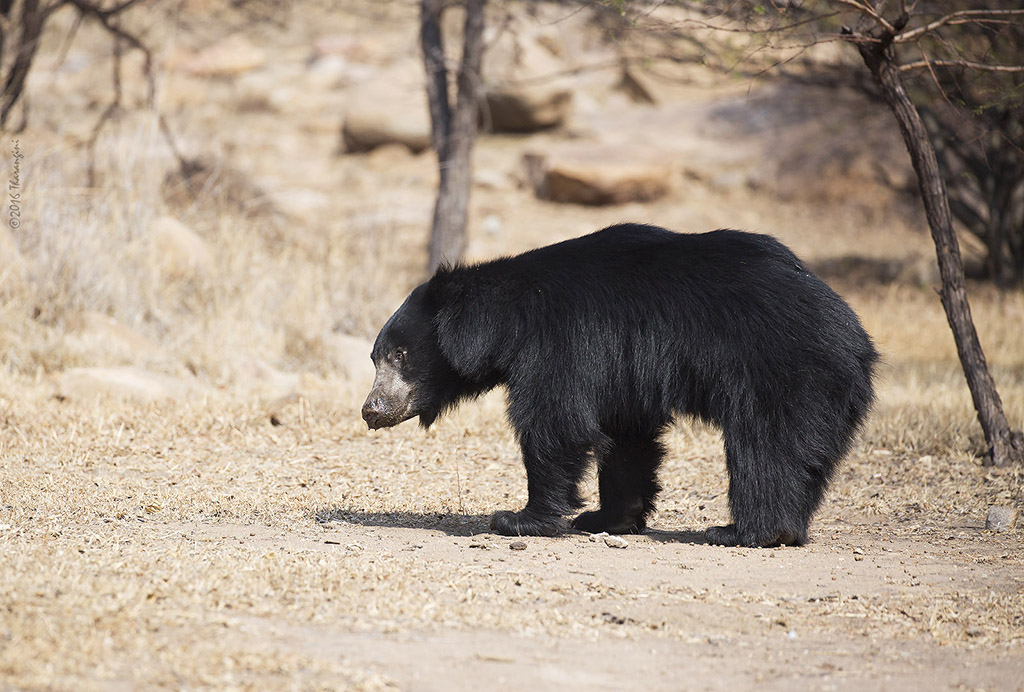Green Minute News
Daroji Sloth Bear Sanctuary, the perfect home for not just Sloth Bears but also various other birds and mammals, has finally got the protection of aneco-sensitive zone (ESZ). This notification by the Centre which comes 25 years after the sanctuary was established is a much needed welcome addition to the inmates of the Sanctuary.
Spread over an area of 82.72 sq kms and across Hosapete and Sandur taluks, the Sanctuary is located in Ballari district, Karnataka, India. Rocks, boulders, crevices and caves provide the perfect habitat for the Sloth Bears but the journey to achieve this has been equally rocky. Ballari known for its mining barons and hills being reduced to nothingness in no time by various mining activities has posed a constant threat to the Sanctuary.
It was not an uncommon sight to see fine red mud from the mining areas covering everything and air laden heavily with suspended particles that contributed widely various ailments, in the vicinity of the sanctuary. Though the respite from illegal mining came in 2011 due to the constant unwavering efforts of the conservationists and wildlife activists, challenges from various vested interests continues to haunt the sanctity of the sanctuary.

With the notification of the ESZ by the centre the Sloth Bears and fellow inmates of the sanctuary can finally hope for some much needed breath of fresh air. The sanctuary will have an ESZ area of 158.70 square kilometres and an extent varying from one to 4.7 kilometres. About 16 villages (only partially) will fall under ESZ area in Hosapete taluk like Kamalapura, Daroji, Bukkasagara, Vaddarahalli, Metri and others comprising 142.01 hectare area.
The final notification dated September 25, 2019 states that the ESZ Zonal Master Plan has to be formed within two years of this notification.
Samad Kottur, well known Naturalist and wild life activist from Hosapete says ” I was a member of the local committee of ESZ and helped the forest department to draft dos and don’t of the ESZ area. Now the department needs to implement it strictly, and remove the violators from its purview. We can heave a sigh of relief as the battle to stop stone quarries was really tough. The bears and rest of the wildlife will be in the safe haven. At the same time their responsibility is increased, they need to scan the violations and remove or prevent any such violations.”

Development activities in ESZ will be
regulated and they have to strictly adhere to rules and not take up any prohibited
activities in the ESZ while the existing land use in the ESZ area cannot
be converted into areas for any commercial/residential/industrial
activities.Further, no new construction of hotels or resorts will be allowed
within one kilometre from the boundary of Daroji Sanctuary or upto the extent
of ESZ whichever is applicable.
This will give valuable freedom and safety for the bears that move out of
the sanctuary and also reduce human animal conflict. The scrub jungle and terrain
which are ideal for leopards too as confirmed by increased sightings of
leopards in and around the area in the recent past is a clear indication as to
why the ESZ notification is such an apt move.

The Sloth Bears prefer grasslands and forested areas at lower altitudes. They are mostly nocturnal, feeding and roaming in the night while sleeping during the day time. If they are disturbed or there is shortage of food for cubs, one can see them during the day time also. Excellent tree climbers, they feed on a variety of food and relish insects, ants, termites, honey, as also fruits and plants.
All commercial mining, stone quarrying and crushing units are prohibited with immediate effect in the ESZ area.
Santosh Martin, one of the key activists in the ban on illegal mining in the region welcomed the regulations. He said with the ESZ notified, all stone quarries have to wind up now. “Some 10-12 stone quarries are functioning in the ESZ area, a few very close to the boundary of the sanctuary. In fact, they had gone to the courts to continue with their quarrying. But now they will have to pack their bags and go as quarrying is a prohibited activity in the ESZ. Mining is no issue as they are far off – some 13-14 kilometres away.”
Martin added, “The population of the bears have gone up, there has been no census, however, it is estimated some 100-120 maybe there in the caves and the hills. It is very difficult to count bears and has not been done till now. Better to leave them alone and give them all the protection that is needed.”

Once a barren jungle, the PA has rejuvenated and it has varied plant species typical to North Karnataka Scrub Forests. The entire luxuriant flora has regenerated from stumps and due to seed dispersal done by bears and birds. Apart from 150 bird species including the endemic Yellow Throated Bulbul, the population of leopard, porcupine, pangolin, jackal and other wildlife has increased over the years.


Comment here